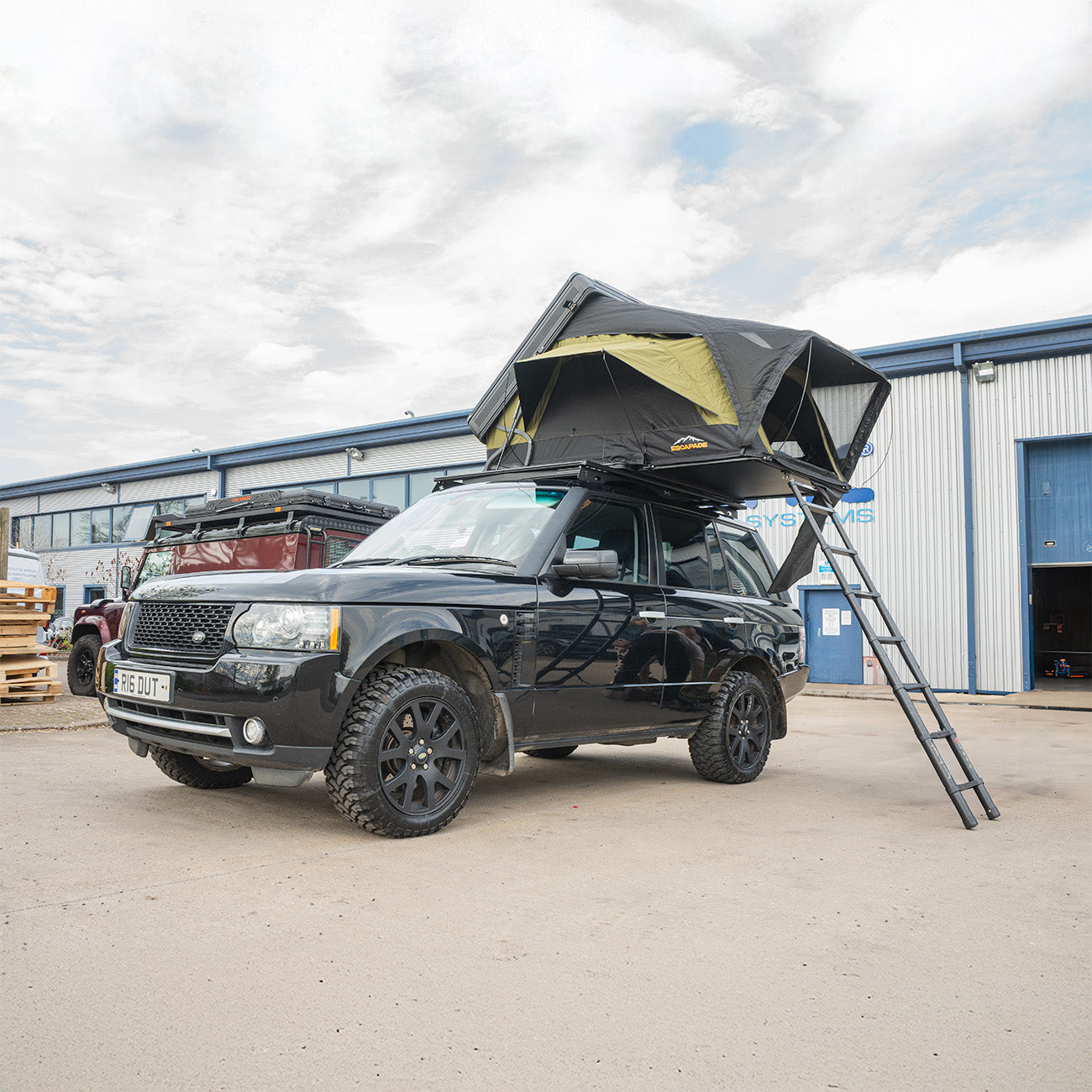Not All Roof Tents Are Created Equal — Here’s How to Spot the Difference
When you invest in a roof tent, you’re not just buying a place to sleep. You’re buying into freedom, comfort, and the promise that your gear will stand up to the demands of real-world adventure — year after year.
But as roof tents have grown in popularity, so too has the number of manufacturers cutting corners to compete on price. These shortcuts aren’t always visible at first glance, but they can dramatically impact the tent’s performance, comfort, and lifespan.
At Escapade, we design and build our tents to outlast trends. Here’s what to watch out for when comparing roof tents — and why our standards never waver.
1. Powder-Coated Aluminium Components: The First Line of Defence
From the ladder to the outer shell, aluminium is a staple in most roof tent construction. But here’s what many people don’t realise: not all aluminium components are powder coated.
Powder coating isn’t just about aesthetics — it forms a protective layer that prevents oxidation, corrosion, and long-term wear. Skipping this step reduces manufacturing costs, but over time, exposed aluminium becomes vulnerable to corrosion, especially in wet or coastal climates.
✅ Escapade Standard: All of our aluminium components — including ladders, shells, and mounting rails — are powder coated as standard for maximum durability and weather resistance.

2. Under-Mattress Condensation Layers: Comfort That Lasts
Roof tents are essentially enclosed spaces with limited airflow beneath the mattress. Without a proper ventilation barrier, moisture builds up quickly — leading to that unpleasant “fousty” smell, mildew, and eventually, mattress degradation.
A simple under-mattress condensation layer prevents moisture from becoming trapped, increasing airflow and dramatically extending the life of your sleeping surface.
✅ Escapade Standard: We include a condensation layer under every mattress to ensure a dry, hygienic and odour-free sleep — no optional upgrades or extra charges.
BONUS FEATURE
All of our hard-shell roof tents are made with honeycomb aluminium layers. See the graphic below. This feature not only helps keep you warmer at night, but it also prevents moisture buildup too.

See what happens when you don't have this honeycomb feature in the image below: Photo taken from interior of unnamed competitor roof tent.
Photo taken from interior of unnamed competitor roof tent.
3. Bolts and Washers: Small Parts, Big Impact
Look under the mattress of most roof tents and you’ll find bolts securing the mounting rails to the tent base. In many tents, these bolts are small and topped with narrow washers — and you can feel them through the mattress. Over time, they create pressure points, wear on the fabric, and even allow water ingress.
Our system uses low-profile bolts with oversized 50mm washers. These eliminate pressure points (no more “Princess and the Pea” vibes) and create a watertight seal that protects the metalwork and your mattress.

✅ Escapade Standard: Every tent is built with flush, large-surface mounting washers that are designed to disappear beneath your sleeping surface — and protect the integrity of the shell.
4. Blackout Interior: A Sleep Essential, Not a Luxury
Some brands skip blackout fabric to cut costs, opting instead for thinner, lighter materials that leak light and compromise your sleep.
But when you’re parked beneath a streetlamp or the sun rises at 4:45 a.m. in the Scottish Highlands, you’ll wish for proper blackout. It’s not just about comfort — it’s about privacy too.
✅ Escapade Standard: Every tent comes with a full blackout interior, made from heavier, light-blocking fabric. It’s one of the reasons our tents feel like true sleeping quarters — not just elevated fabric boxes.
5. Weatherproof Seals: Layers That Make a Difference
In hard shell roof tents, the perimeter seal is your first defence against wind-driven rain. Many mass-produced tents use a single or double seal to save weight and cost — but at Escapade, we consider this non-negotiable.
We use a triple-seal design on all our hard shell tents. Yes, it adds weight. Yes, it takes longer to assemble. But it’s worth it. You’ll feel the difference in stormy conditions, and your gear will stay dry when it matters most.

✅ Escapade Standard: Triple-sealed hard shells for all-weather performance and peace of mind.
6. Ventilation Ports: Invisible Until You Need Them
Ventilation is often treated as an afterthought — but it makes a massive difference to long-term comfort. Too few vents and you’ll deal with condensation, stale air, and sleeping bags that feel damp by morning.
Adding ventilation ports increases tooling time and cost, so many tents include the bare minimum. We believe that if you’re investing in a premium roof tent, you shouldn’t have to compromise on breathability.

✅ Escapade Standard: Additional ventilation ports are included on all our tents to promote airflow and eliminate condensation buildup.
Final Thoughts: Look Beneath the Surface
When a roof tent looks good in photos and costs a few hundred less, it’s tempting to see it as “basically the same.” But the truth is in the details — and the shortcuts you don’t notice right away often become the ones you can’t ignore a few months down the line.
At Escapade, we don’t cut corners. We engineer for the long haul, the harsh climates, the early mornings, and the late-night returns. Because when you’re miles from home, your tent should be the last thing you worry about.
Explore the full range of Escapade roof tents here:
👉 https://www.escapade4x4.co.uk/collections/rooftop-tents
Want to see the difference in person?
📍 Book a demo at our Wiltshire HQ



Share:
Best Rooftop Tents UK: 2025 Buyer’s Guide for Every Adventure
The Game-Changer: What is a Tow Bar Tent?